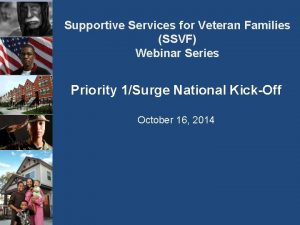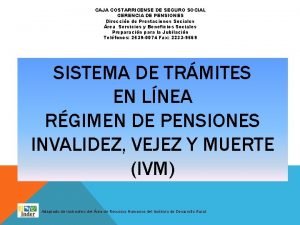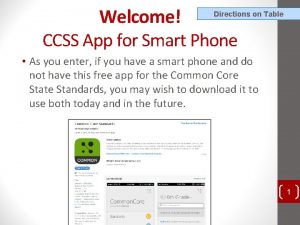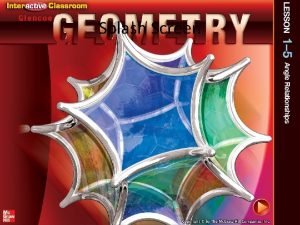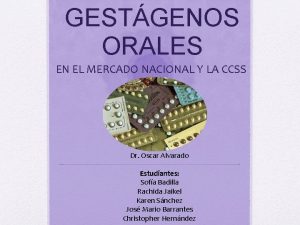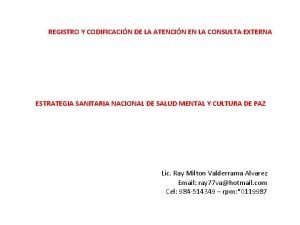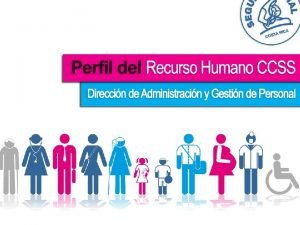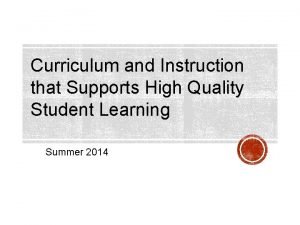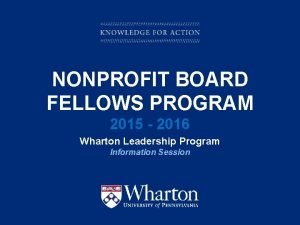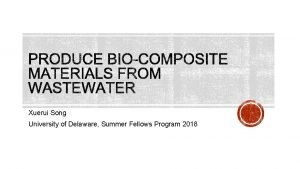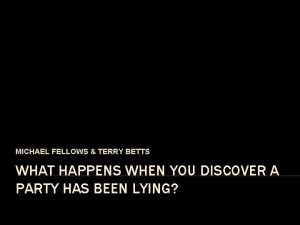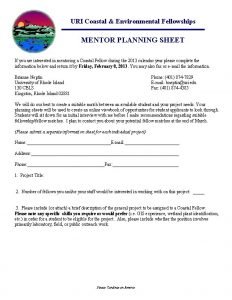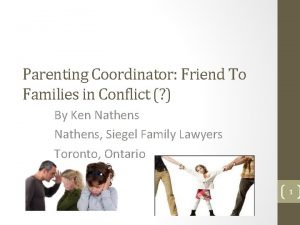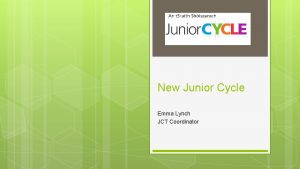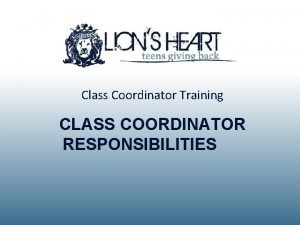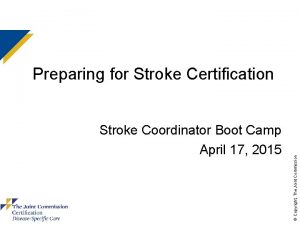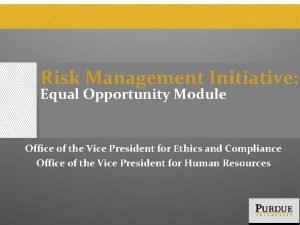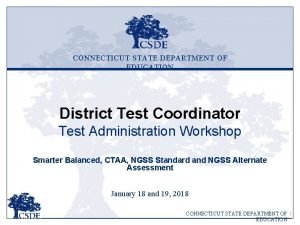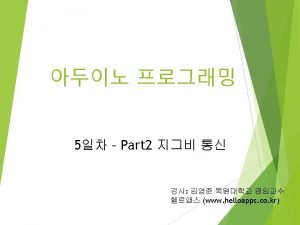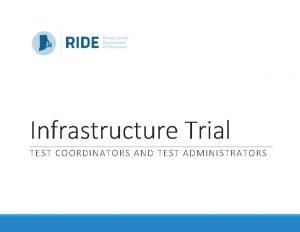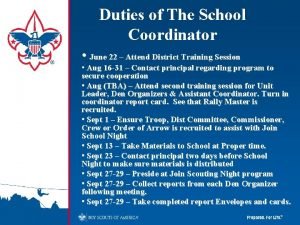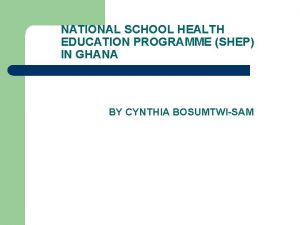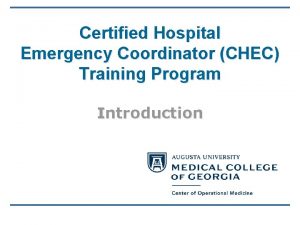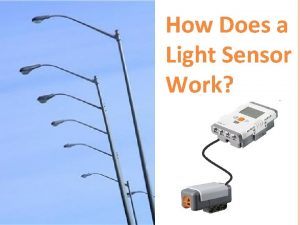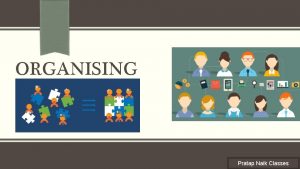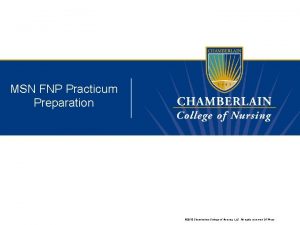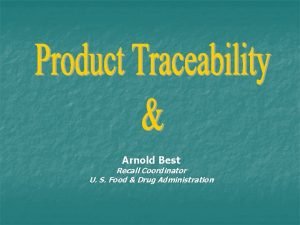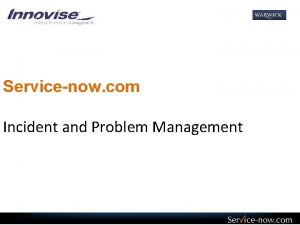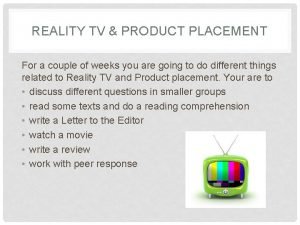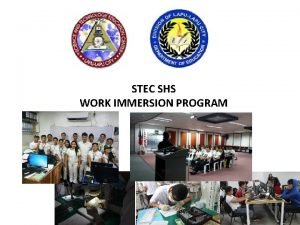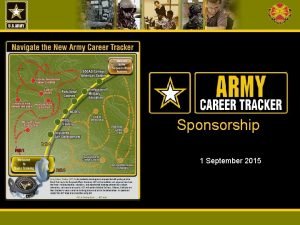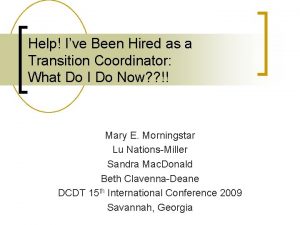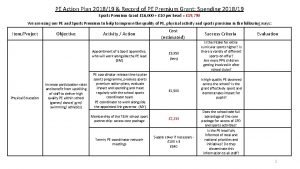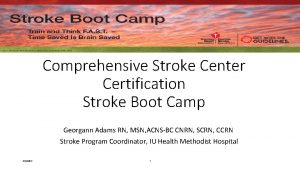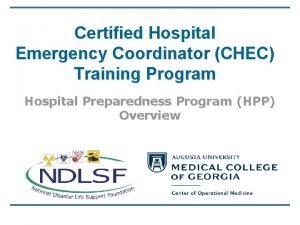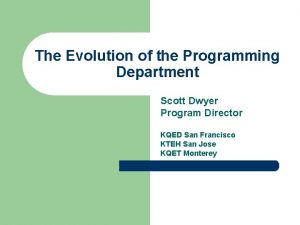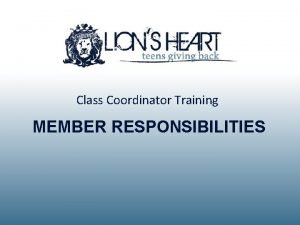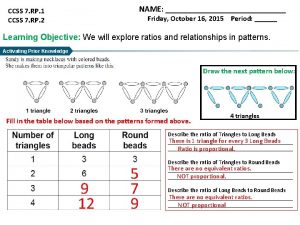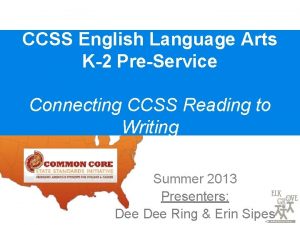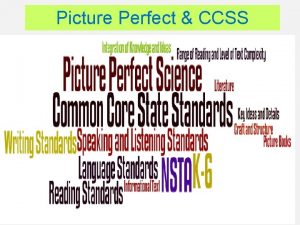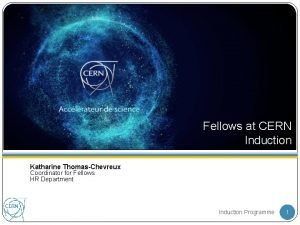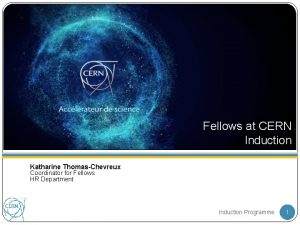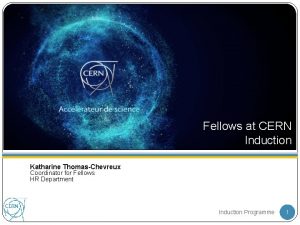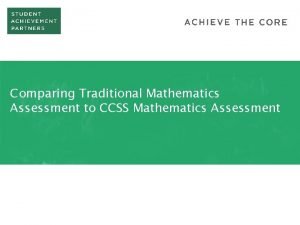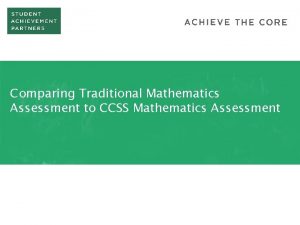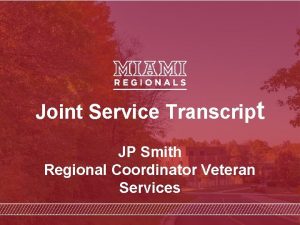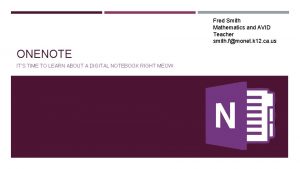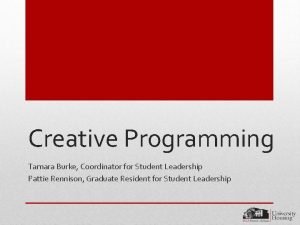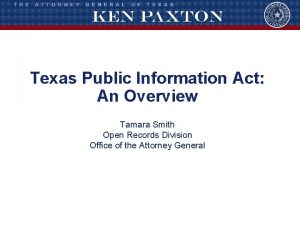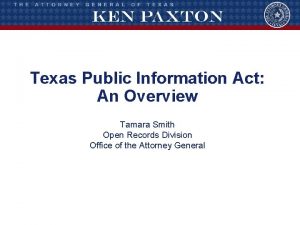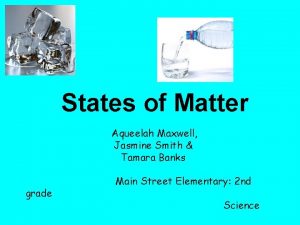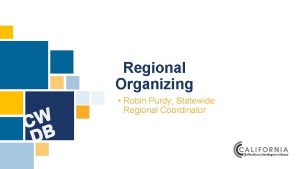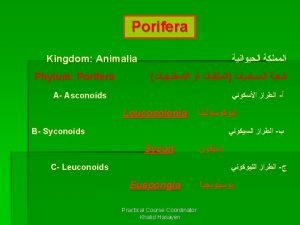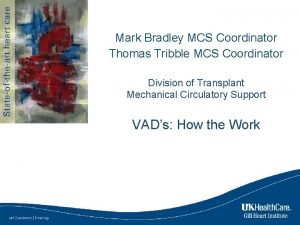CCSS Mathematics Fellows Tamara Smith Regional Mathematics Coordinator









































- Slides: 41

CCSS Mathematics Fellows Tamara Smith Regional Mathematics Coordinator Olympic ESD

Common Ground—Leadership of Others • Stand up if…. . – – – – You traveled more than a half hour to get here You traveled less than a half hour to get here You are the oldest child You are the youngest child You are the middle child You like dogs You are a cat lover You have taught elementary school You have taught middle school You have taught high school You have facilitated adult learning You plan ahead You wait until the last minute You are a learner

Overall Purpose and Goals Overall Purpose: Support the Washington State math education system regionally and statewide through communication and coordination to improve student achievement in mathematics. Provide equitable Increase student Increase capacity of CCSS-Mathematics achievement by teacher leaders to professional improving teacher’s support CCSSdevelopment ability to implement mathematics opportunities for effective instructional professional learning. administrators and practices and teachers through the increasing teachers’ statewide network. content knowledge. GOAL 1 GOAL 2 GOAL 3

Our Implications Goal 1: Provide equitable CCSS-Mathematics professional development opportunities for administrators and teachers through the statewide network. 9 coordinators 2012 -13 Fellows 2013 -14 Fellows ~30, 000 Mathematics Teachers ~1, 050, 900 Students 9 Coordinators

Larger context Leadership in the Extended Community Leadership of Others Advocate and Systematize Collaborate Leadership and of Implement Self Know and Model

Purpose of the Fellows • To be a part of and support a system that focuses on math making sense for all students. --Leadership in the Extended Community • To be a part of a community of learners that focuses on putting the shifts into practice to reflect the CCSS vision both around the student making sense of the mathematics and demonstrating that understanding. –Leadership of Others and Self • To deprivatize our practice and take risks in order to facilitate high quality mathematics instruction and experiences students have with the mathematics. –Leadership of Self

Why Do Americans Stink at Math Leadership of Others and Self • Assumptions-What assumptions does the author of the text hold? • Agreements-What pieces of the text do you agree with? • Aspirations-What pieces of the text do you aspire to or act upon for yourself and your colleagues?

Doing Math Together—Leadership of Self • Select and complete a task that you are not familiar with at your grade band. • Think about multiple ways that you might complete this task

Considering our Students Leadership of Self Setting the Baseline Task PURPOSE: To deprivatize our practice and take risks in order to facilitate high quality mathematics instruction and experiences students have with the mathematics. In order to understand where we are in our practice, we will use a baseline task to examine student ideas through the lens of the standards. • This will be operationalized through the content clusters and Standard for Mathematical Practice 3 and 6 (SBAC Claim 3) • This task will be re-examined at the end of the year to explore student growth

Assessment Claims for Mathematics Overall Claim (Gr. 3 -8) Overall Claim (High School) Claim 1 Concepts and Procedures Claim 2 Problem Solving Claim 3 Communicating Reasoning Claim 4 Modeling and Data Analysis “Students can demonstrate progress toward college and career readiness in mathematics. ” “Students can demonstrate college and career readiness in mathematics. ” “Students can explain and apply mathematical concepts and interpret and carry out mathematical procedures with precision and fluency. ” “Students can solve a range of complex well-posed problems in pure and applied mathematics, making productive use of knowledge and problem solving strategies. ” “Students can clearly and precisely construct viable arguments to support their own reasoning and to critique the reasoning of others. ” “Students can analyze complex, real-world scenarios and can construct and use mathematical models to interpret and solve problems. ”

Claim 3 – Communicating Reason Claim 3: Students can clearly and precisely construct viable arguments to support their own reasoning and to critique the reasoning of others. A. B. C. D. E. F. G. Test propositions or conjectures with specific examples. Construct, autonomously, chains of reasoning that justify or refute propositions or conjectures. State logical assumptions being used. Use the technique of breaking an argument into cases. Distinguish correct logic or reasoning from that which is flawed, and—if there is a flaw in the argument—explain what it is. Base arguments on concrete referents such as objects, drawings, diagrams, and actions. Determine conditions under which an argument does and does not apply.

Making Sense of the Task • Revisit the task as though you are a student so that you can think about misconceptions that might arise. Discuss: • What knowledge do your students need to have to be successful on this task?

Connecting it to the rubrics • Content Cluster Rubric – Focuses on a specific cluster for the task • SBAC Achievement Level Descriptor Rubric – Focuses on Claim 3 broadly • Review the rubrics and consider how you might score yourself based on the task you completed.

Anchoring Yourself in Student Work • Look at the 3 anchor papers associated with your task. Discuss as a group: – What Content Cluster score does this student demonstrate? – What SBAC ALD score does this student demonstrate? • What considerations does this illuminate for your students? • Review the official scores for your papers and annotated notes. – What further clarification do you need?

Administering the Tasks Cold Leadership of Self • These tasks will be used as a baseline • Please do not give any prior instruction, it is very important that your students demonstrate what they know at this time • This data will be used as a baseline—it is more important that your students grow from this baseline, than do well at this first administration. • K-1 should read the task for the students and accept dictation as answers if needed.

Focusing on Student Learning Protocol Leadership of Self, Others, and the Extended Learning Community • Review the protocol • Prior to our second meeting please: – – Administer the task to your students “cold” Score the tasks Bring back 3 pieces of work that you would like to discuss Consider the Implications for teaching • Data Collection in Spring – Your students scores in Content and Claim 3 – The growth your students have made

COLOR Corners Fellows Plan Document Leadership of Self, Others, and the Extended Learning Community • Review the document – Highlight something that squares with your thinking (you expected to do this as part of your fellows work) – Put a question mark over something that you are not sure about

Creating your plan • Review sample plans from last year • Reflect: – When will be a good time to meet with your administrator? – What are some initial ideas you have about your Common Core work this year? – What implications does the NY times article have on your plan? – Are there any potential barriers you foresee in beginning this work? – How can I support you?

CSTP Teacher Leadership Framework Leadership of Self • Working with Adult Learners • Communication • Collaboration • Knowledge of Content and Pedagogy • Systems Thinking

Teacher Leadership Self-Assessment Leadership of Self • The Self-Assessment is an opportunity to do some individual reflecting about your leadership skills and where you are in each of the 5 areas. • Individual results will be given back to you the next time we meet. The aggregate results by region will used to inform the Coordinators’ work with Fellows and OSPI, so please be thoughtful and take your time. • Here is the link to the online self-assessment: https: //www. surveymonkey. com/s/X 7 VRWTJ

Lunch

Walk and Talk • Where did you find yourself thinking about your Fellows role as you were taking the self assessment? • What did you realize about your own Knowledge, Skills and Dispositions as you took the self assessment? • What do you think the group should concentrate on in terms of building our leadership capacity as defined in the self-assessment?

Looking Deeper at Mathematical Practice 3 and 6

Improving Student Learning Leadership of Self and Others • What do students need to know and do? • How do we know if they know it? • How are we going to help get them there?

Simulation for Generating an Argument ~Instructional Model 1. Identify the Task and Question 2. Generate a Tentative Argument 3. Argumentation Session 4. The Reflective Discussion 5. Final Written Argument


Stage One: Generating a Question and Beginning the Task • Martha wants to set up a soup stall at a Farmer’s Market and raise money for charity. • What questions do you have for Martha?

Selling Soup • Martha wants to set up a soup stall at a Farmer’s Market. • She hopes to sell 500 mugs of soup, each with a white or brown bread roll. • She wants to make as much profit as she can. • She doesn’t want to waste food at the end. • She needs to know how much of each flavor soup to buy and how many of each kind of bread roll to buy.

Stage 2: The Generation of a Tentative Argument 1. Take turns to explain your idea of how to respond to Martha’s Soup Question. 2. Listen carefully to each other and ask questions if you don’t understand. 3. Once you understand each other’s work, agree together in your group on the best approach for completing the problem. 4. Outline on your large sheet of paper the approach you are going to use. P-29

Stage 2: Generation of a Tentative Argument Claim: The answer to Martha’s question. Evidence: Data to support your answer. (data charts, equations, graphs, tables, explanations, etc. ) Justification: A rationale that explains why the evidence you use is relevant or important, along with any assumptions you have made regarding the problem. The Research Question: What exactly should I buy so that I can make the most profit and not have lots of soup and rolls left over at the end? Your group’s claim: Your evidence: Your justification of the evidence:

Stage 3: The Argumentation Session Students are given an opportunity to share, evaluate and revise the products or process of their investigation with their classmates. • Visit other groups. • Use the Gallery Walk Interview Questions to guide your discourse. • Give feedback and be ready to take back ideas to your group.

Stage 4: A Reflective Discussion • Meet with your group – Discuss anything you learned from other groups – Discuss feedback on your group’s ideas • Modify/Revise original ideas based on feedback • Teacher facilitates whole class discussion – encouraging students to share what they learned – common challenges faced by groups

Stage 5: The Production of a Final Argument Each student makes sense of their experiences by producing a final argument • State the question and claim you are trying to support • Include evidence (data + analysis + interpretation) • Provide a justification of your evidence • Organize your argument in a way that enhances readability • Correct grammar, punctuation, and spelling errors

Reviewing the Stages of the Generate an Argument Instructional Model Identify the Task and Question Generate a Tentative Argumentation Session The Reflective Discussion Final Written Argument

Structuring Learning Leadership of Self and Others • How does this instructional model help students develop skills to meet the intent of Mathematical Practice 3 and 6?

Productive vs. Unproductive Leadership of Others Beliefs

Beliefs “Teachers’ beliefs influence the decisions that they make about the manner in which they teach mathematics… Students’ beliefs influence their perception of what it means to learn mathematics and their dispositions toward the subject. ” (NCTM, 2014)

Productive and Unproductive Beliefs • On a 3 x 5 card, individually brainstorm Productive and Unproductive Beliefs teachers have about mathematics. Practice Mathematics Beliefs

Productive vs. Unproductive Card Sort Unproductive Beliefs Productive Beliefs

Professional Development Clips • 3 A’s protocol – Article: Why Do Americans Stink at Math? • • Student Tasks Soup Task Argumentation Protocol Productive vs. Unproductive Beliefs – Principles to Action (NCTM 2014)

See you at 9: 00 am on Nov 17 th Remember to: • Baseline Tasks bring back 3 pieces of student work • Meet with Admin and fill out Section A of the Fellows Plan before 11/10. • Principles to Action…Read Pgs. ____ to ____ by our next meeting • Fellows PD survey Email to Tamara before Nov 10 th – Your student data from the Task – Your “Leading Professional Learning Plan” tsmith@oesd. wednet. edu Clock Hours—register for Course ID
 Ssvf university webinars
Ssvf university webinars Gerencia de pensiones ccss
Gerencia de pensiones ccss Ccss app
Ccss app Ccss splash
Ccss splash Primafen costa rica
Primafen costa rica Test de tamizaje para adolescentes de la ccss
Test de tamizaje para adolescentes de la ccss Organigrama ccss
Organigrama ccss Ccss jpams
Ccss jpams Wharton nonprofit board fellows
Wharton nonprofit board fellows Udel summer fellows
Udel summer fellows Michael fellows barrister
Michael fellows barrister Unc hematology oncology
Unc hematology oncology Mickey leland international hunger fellows program
Mickey leland international hunger fellows program Secdef executive fellowship
Secdef executive fellowship Uri coastal fellows
Uri coastal fellows Ken nathens lawyer toronto
Ken nathens lawyer toronto Jct sphe
Jct sphe Class cordinator
Class cordinator Stroke coordinator boot camp
Stroke coordinator boot camp West lafayette campus title ix coordinator
West lafayette campus title ix coordinator Airast portal ct
Airast portal ct White coordinator step
White coordinator step Kr19 dmca
Kr19 dmca Test coordinator
Test coordinator School wins coordinator duties and responsibilities
School wins coordinator duties and responsibilities Shep coordinator
Shep coordinator Certified hospital emergency coordinator
Certified hospital emergency coordinator How light sensor works
How light sensor works Ishita works as a corporate event coordinator
Ishita works as a corporate event coordinator Chamberlain msn fnp
Chamberlain msn fnp Recall coordinator
Recall coordinator Servicenow problem management
Servicenow problem management Product placement reality tv
Product placement reality tv Shs work immersion
Shs work immersion Army tasp unit coordinator
Army tasp unit coordinator Transition coordinator jobs
Transition coordinator jobs Pe action plan
Pe action plan Stroke coordinator boot camp
Stroke coordinator boot camp Chec training
Chec training Kteh schedule
Kteh schedule Lcif coordinator
Lcif coordinator Class coordinator responsibilities
Class coordinator responsibilities
